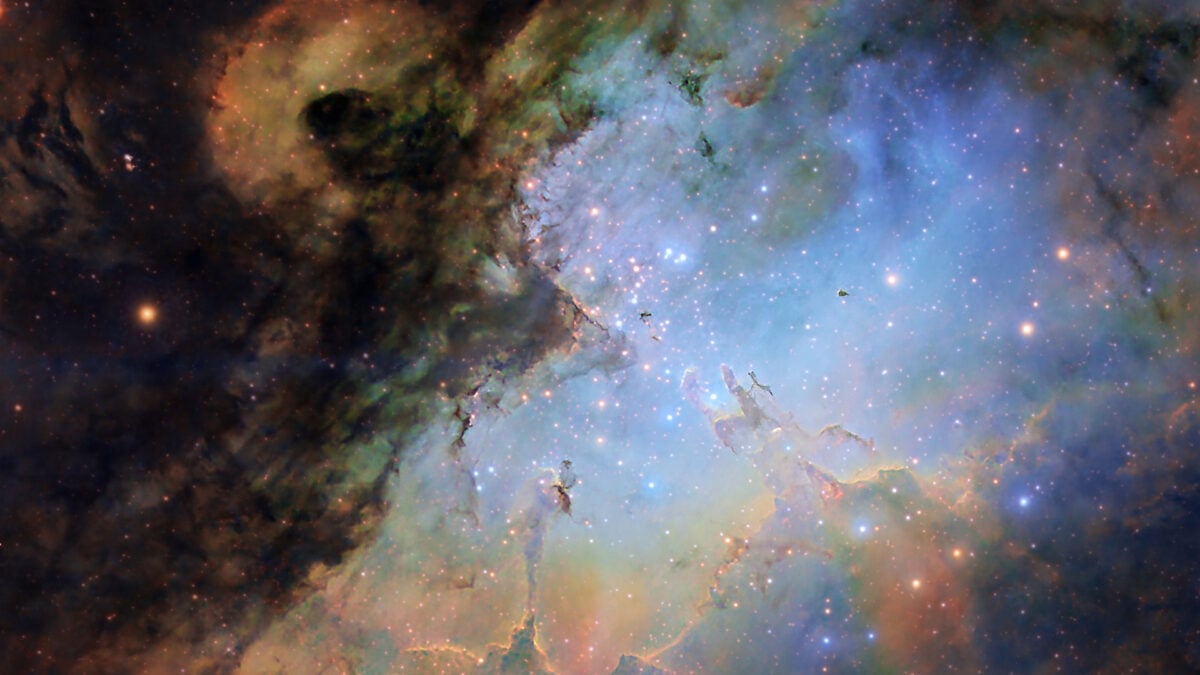After relying on an educated guess for decades, scientists have finally confirmed the dipole moment of aluminum monochloride (AlCl), an elusive but important molecule known to sneak around the interiors of ancient galaxies.
An electric dipole moment is a measure of polarity—a crucial determinant for many physical properties of any system, such as its boiling point or solubility. Given its importance, the new result, published last month inPhysical Review A, presents exciting opportunities for applications across a wide range of fields, from quantum computing to astrophysics.
At our core, we’re all made of molecules. Anything we do—whether it’s picking up a cup of coffee or digesting coffee after taking a sip—can be explained in terms of molecular interactions. This is of obvious interest to scientists, and for a host of reasons. For one, knowing how different molecules interact either with each other or with their environment can reveal a lot about their respective characteristics, akin to how physicists study different particles usinglarge particle colliders.
But another reason is that the interaction itself—in this case, the dipole moment—helps scientists understand completely different systems in unexpected ways. “In chemistry, dipole moments affect everything from bonding behavior to solvent interactions,” said Boerge Hemmerling, a physicist at the University of California (UC), Riverside, and paper co-author, in astatement. “In biology, they influence phenomena like hydrogen bonding in water. In physics and astronomy, the dipole moments can be harnessed to make neighboring molecules interact, for instance, with the goal to create a quantum entanglement between them.”
The dipole moment of AlCl, in particular, shows promise across a wide range of applications, added Stephen Kane, an astrophysicist at UC Riverside and study co-author, in the same statement. “Accurate dipole moment data improves how we interpret molecular signatures in starlight,” said Kane. “The ratio of aluminum to chlorine in stars, as revealed through AlCl measurements, provides critical clues to stellar nucleosynthesis and the material history of these celestial bodies.”
For the experiment, Hemmerling and his team built a customized laser vacuum system they had been developing for more than seven years, enabling them to perform high-precision spectroscopy. They generated beams of AlCl in a vacuum inside the setup, picking apart the molecule to better understand its chemical underpinnings and behavior. Eventually, they arrived at the value of 1.68 Debye (the unit for measuring dipole moments) for the dipole moment of AlCl.
It may seem strange that such a fundamental number took nearly a century to lock down, but it turns out the estimate was really close. In 1956, chemistDavid R. Lideestimated the dipole moment of AlCl at 1.5 Debye—a mere 0.18 Debye away from Hemmerling’s result. The closeness demonstrates the validity of existing theoretical models while also offering some clues as to how the accuracy can be improved even further, Hemmerling said in the same statement.
“From improving our understanding of distant stars to enabling next-generation quantum computers, the precise measurement of AlCl’s electric dipole moment is a foundational step toward unlocking future discoveries,” Hemmerling said.
Get the best tech, science, and culture news in your inbox daily.
News from the future, delivered to your present.
Please select your desired newsletters and submit your email to upgrade your inbox.
Astronomers have confirmed the existence of a companion star in a tight orbit around Betelgeuse, resolving a long-standing mystery about the star’s varying brightness.
The object appears to be older than our solar system itself.
The presence of apparent biological signatures on Venus has left UK-based researchers chasing down bacterial life in the planet's clouds.
A new study on the structure of ice formed in space overturns a decades-long consensus in astronomy.
This theory could finally solve one of the biggest mysteries in cosmology.
This cosmic visitor is now officially named 3I/ATLAS, and it appears to be a comet from another solar system.



 Motivational
Motivational 22 Jul, 2025
22 Jul, 2025 Robert Gomez
Robert Gomez